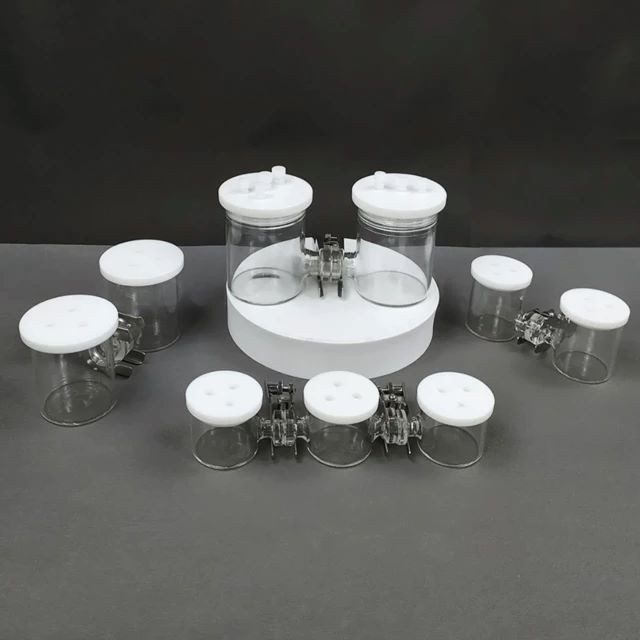
Electrochemical Consumables
H Type Electrolytic Cell Triple Electrochemical Cell
Item Number : ELCH
Price varies based on specs and customizations
$69.90 - $599.90 / set
- Specification
- 30ml~ 500ml
- Applicable temperature range
- 0 ~ 60℃
- Material
- Boron glass + PTFE
Shipping:
Contact us to get shipping details Enjoy On-time Dispatch Guarantee.
Why Choose Us
Easy ordering process, quality products, and dedicated support for your business success.
Introduction
An electrolytic cell is an electrochemical cell that uses electrical energy to drive a non-spontaneous redox reaction. It consists of an electrolyte and two electrodes (a cathode and an anode). When an external voltage is supplied to the electrodes, the ions in the electrolyte are attracted to an electrode with the opposite charge, allowing charge-transferring (also known as faradaic or redox) events to occur. The negative electrode is called the cathode and the positive electrode is called the anode. Oxidation occurs at the anode, and reduction occurs at the cathode.
The electrochemical H-type electrolytic cell can be configured with membrane or non-membrane sealing in two, three, or hybrid configurations, with three electrodes in the H-type electrolytic cell.
Technical specifications
Double H type electrolytic cell
| Specification | 30ml~ 500ml |
|---|---|
| Applicable temperature range | 0 ~ 60℃ |
| Applicable membrane area | 15mm (can be customized) |
| Material | Boron glass + PTFE |
| Electrolytic cell punching | Three electrode holes (6mm) Four gas (3mm) can be customized opening |
Triple H type electrolytic cell
| Specification | 30ml~ 500ml |
|---|---|
| Applicable temperature range | 0 ~ 60℃ |
| Applicable membrane area | 0.5cm2/1cm2 |
| Material | Boron glass + PTFE |
| Electrolytic cell punching | Three electrode holes (6mm) Six air holes (3mm) can be customized |
Detail & Parts

H-shaped sealed electrolytic cell structure

H-shaped unsealed electrolytic cell structure

PTFE type details



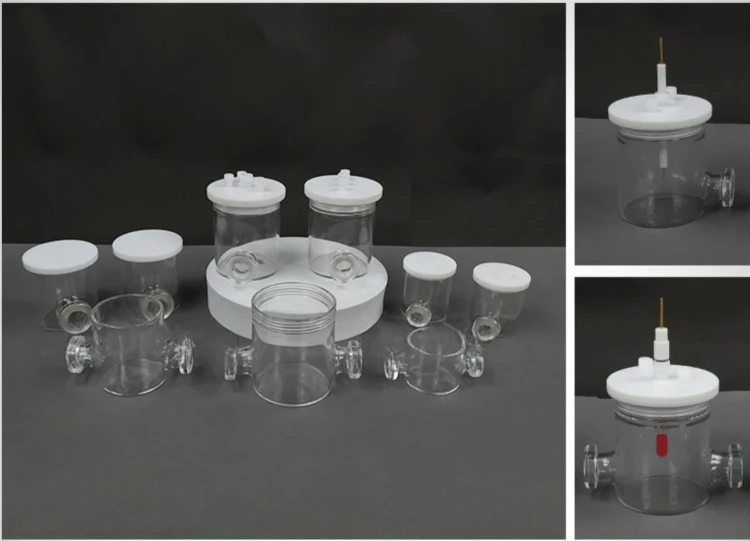
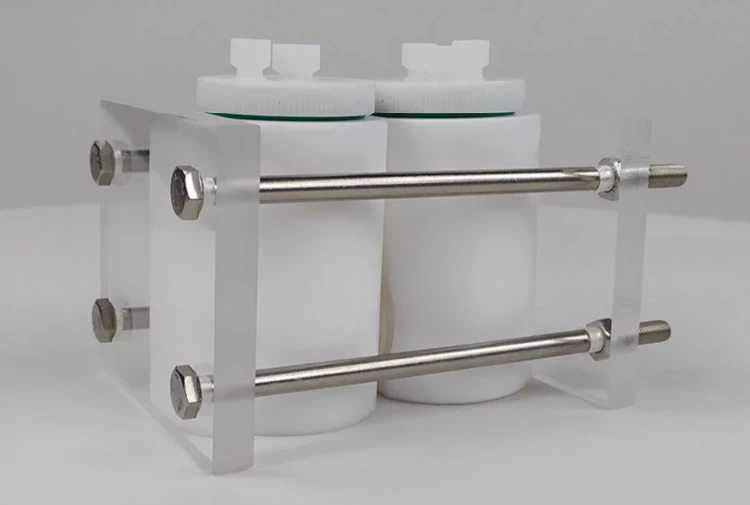


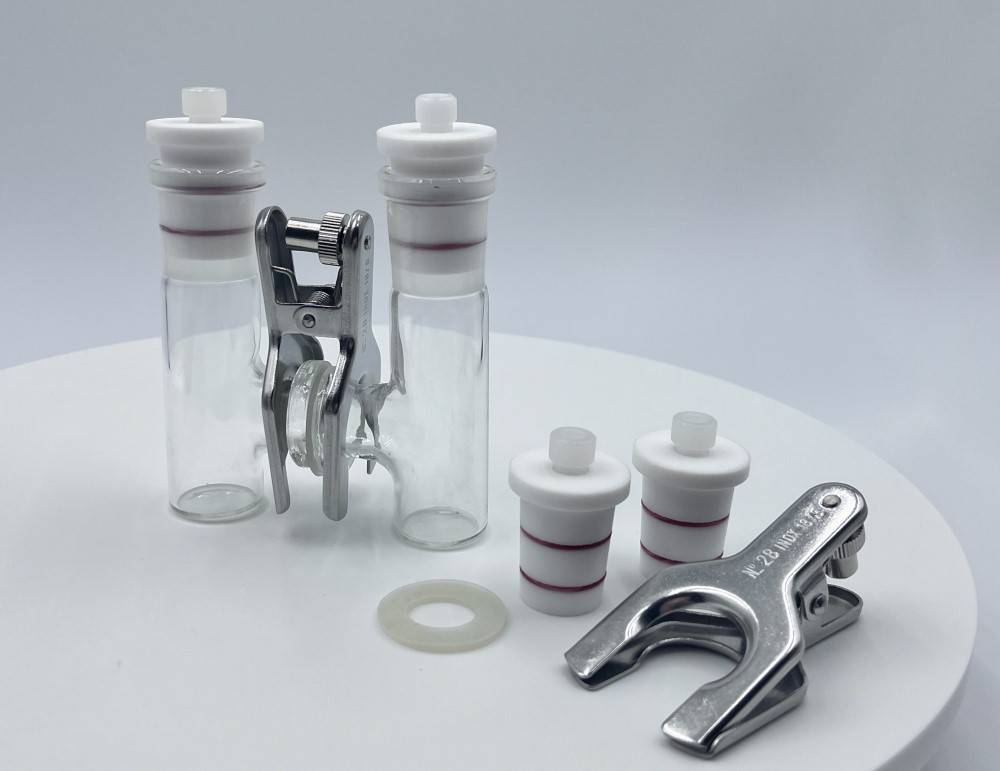
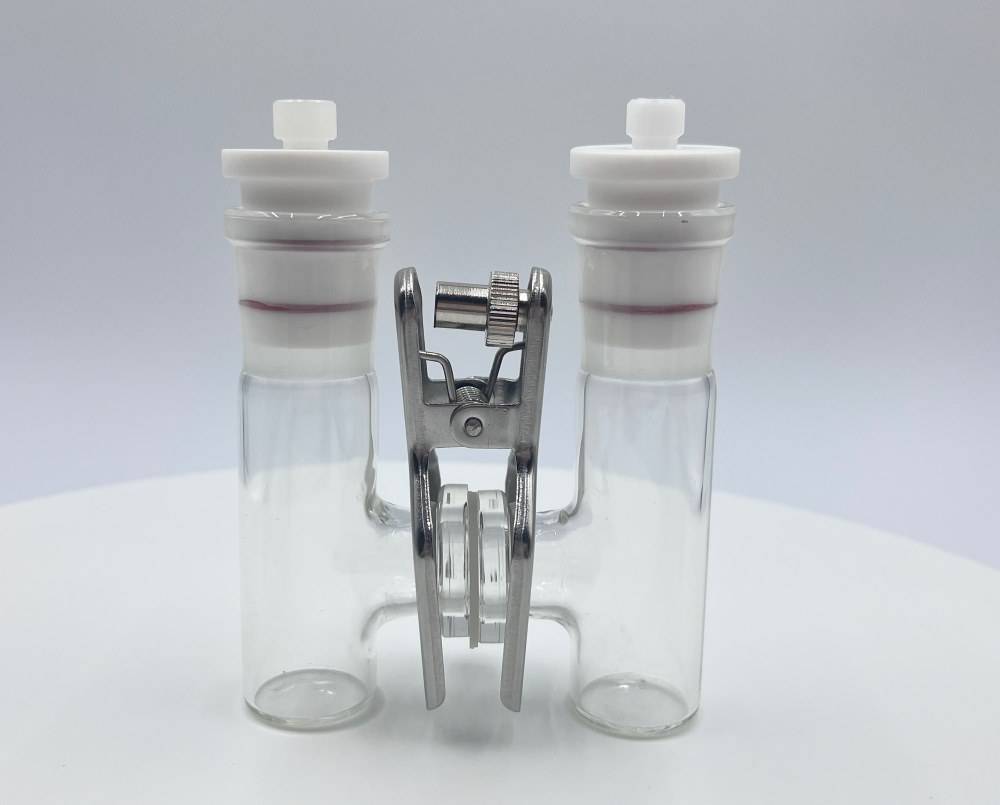

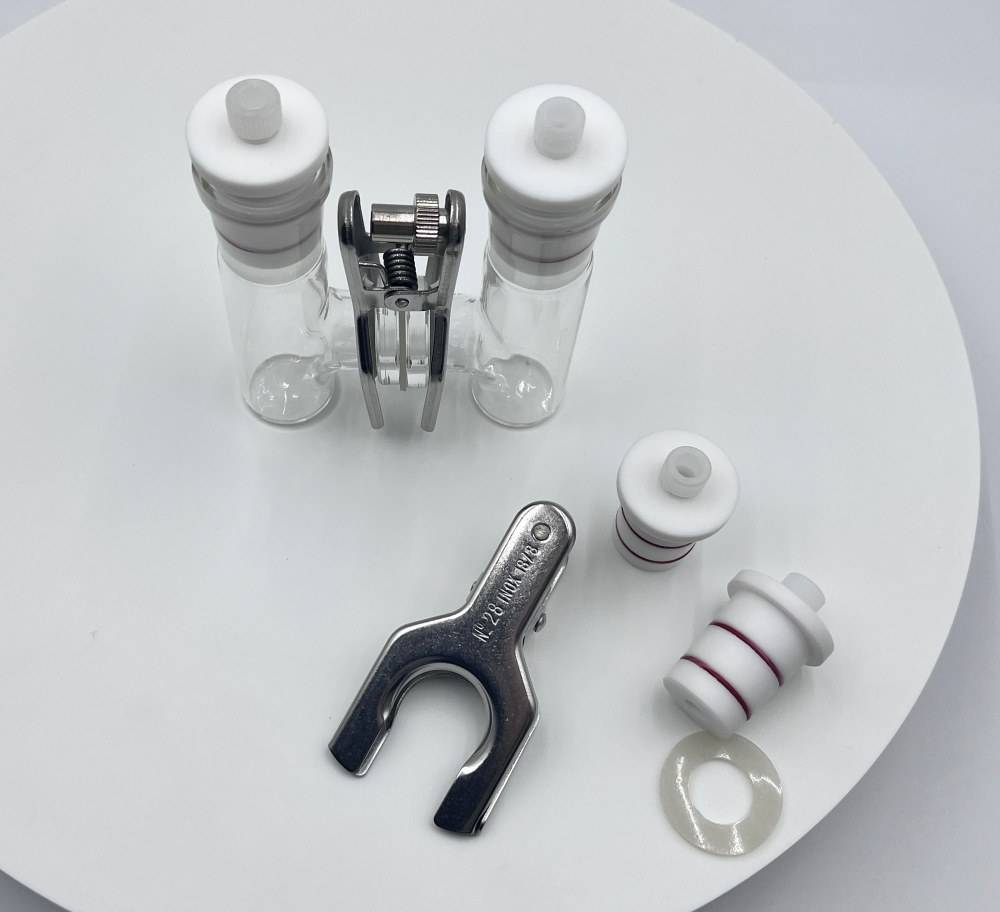

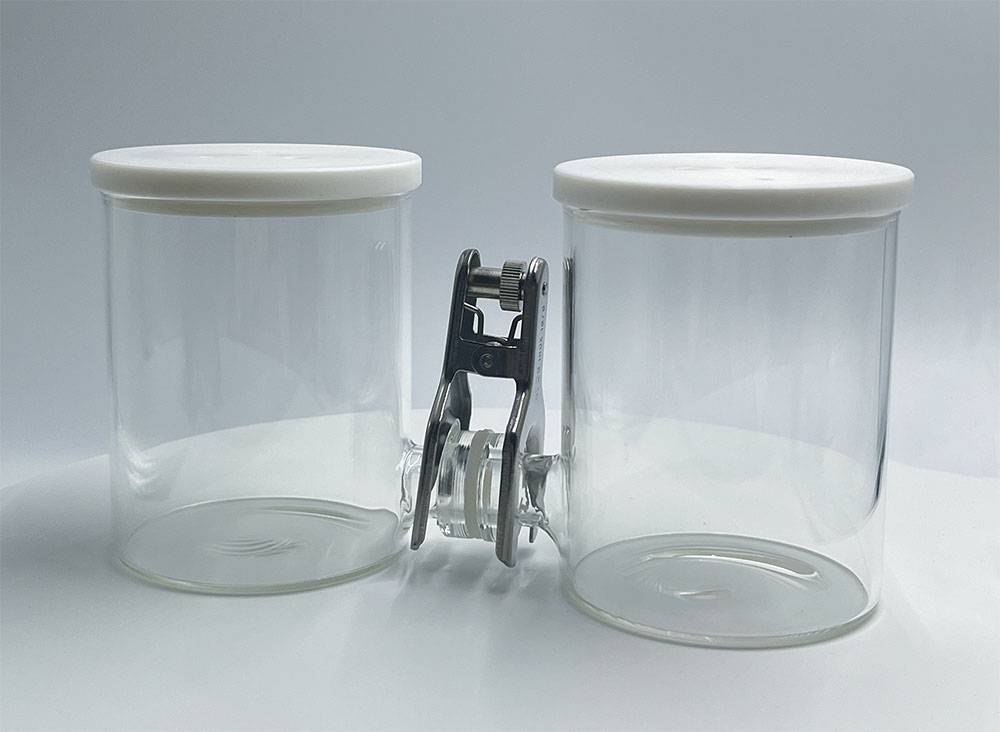

Operating steps
H type sealed electrolytic cell

1. The electrolytic cell, which is sealed, is comprised of a sealing rubber ring, a sealing plug, a polytetrafluoroethylene cover, and a cell body.

2. To install, insert the electrode and gas pipe into the electrolytic cell, and then install the sealing ring.

3. Next, install the sealing nut onto the electrode and attach the air hole, then squeeze the sealing ring and tighten the nut.

4. After that, place the cell seal onto the cell body.

5. Finally, secure the cover in place.

6. The installation process is complete (the triple version is commonly used).
H type unsealed electrolytic cell

1. Install the sealing nut onto the electrode and attach the air hole, then squeeze the sealing ring and tightly rotate the nut.

2. Place the cell seal onto the cell body.

3. Securely fasten the cover.

4. The installation process is now complete (the triple version follows the same steps).
Application

Designed for You
KinTek provide deep custom made service and equipment to worldwide customers, our specialized teamwork and rich experienced engineers are capable to undertake the custom tailoring hardware and software equipment requirements, and help our customer to build up the exclusive and personalized equipment and solution!
Would you please drop your ideas to us, our engineers are ready for you now!
FAQ
The Difference Between H-type Sealed Electrolytic Cells And Unsealed Electrolytic Cells——Use Difference
The Difference Between H-type Sealed Electrolytic Cells And Unsealed Electrolytic Cells——Appearance Difference
What Is The H Type Of Electrochemical Cell?
What Is The Function Of Auxiliary Electrode?
What Is H-cell Used For?
What Is The Difference Between Auxiliary And Reference Electrode?
What Is The H Type Microbial Fuel Cell?
What Materials Are Commonly Used For Auxiliary Electrodes?
How Many Types Of Electrolytic Cells Are There?
How Do Auxiliary Electrodes Affect The Performance Of An Electrochemical Cell?
What Is The H Cell For Hydrogen Permeation Experiments?
Why Are Auxiliary Electrodes Necessary In Electrochemical Systems?
Are There Any Limitations Or Considerations When Using Auxiliary Electrodes?
4.7 / 5
The H-type electrolytic cell arrived promptly and in excellent condition. Its quality is impressive, and it has become an invaluable tool in our lab.
4.8 / 5
This electrolytic cell has exceeded our expectations. It's durable and user-friendly, making it a great choice for our research.
4.9 / 5
The H-type electrolytic cell has revolutionized our lab work. Its advanced technology has enabled us to conduct experiments with greater precision and efficiency.
4.6 / 5
The H-type electrolytic cell from KINTEK SOLUTION is an exceptional piece of equipment. Its construction is solid, and it provides accurate and reliable results.
4.7 / 5
We're thrilled with the H-type electrolytic cell. It has become an indispensable tool in our lab, and its versatility makes it suitable for a wide range of experiments.
4.8 / 5
The H-type electrolytic cell has significantly enhanced our research capabilities. Its user-friendly design and precise measurements have made it a favorite among our team.
4.9 / 5
The H-type electrolytic cell is a testament to KINTEK SOLUTION's commitment to quality. Its durability and accuracy have made it an essential part of our laboratory.
4.6 / 5
We're highly satisfied with the H-type electrolytic cell. Its ease of use and consistent performance have made it a valuable addition to our lab.
4.7 / 5
The H-type electrolytic cell has exceeded our expectations. Its innovative design and reliability have made it a game-changer in our research.
4.8 / 5
We're impressed with the H-type electrolytic cell's durability and accuracy. It has become an indispensable tool in our lab.
4.9 / 5
The H-type electrolytic cell is a marvel of engineering. Its precision and versatility have revolutionized our experimental procedures.
4.6 / 5
We're delighted with the H-type electrolytic cell. Its ease of use and consistent performance have made it a favorite among our researchers.
4.7 / 5
The H-type electrolytic cell has become an indispensable tool in our lab. Its user-friendly design and reliable results have made it a must-have for our experiments.
4.8 / 5
We're extremely satisfied with the H-type electrolytic cell. Its durability and accuracy have made it an invaluable asset to our laboratory.
4.9 / 5
The H-type electrolytic cell is a testament to KINTEK SOLUTION's commitment to excellence. Its innovative design and precise measurements have made it a game-changer in our research.
4.6 / 5
We're highly impressed with the H-type electrolytic cell's performance. Its ease of use and consistent results have made it a valuable addition to our lab.
4.7 / 5
The H-type electrolytic cell has exceeded our expectations. Its durability and accuracy have made it an essential part of our experimental setup.
4.8 / 5
We're thrilled with the H-type electrolytic cell. Its user-friendly design and precise measurements have made it a favorite among our researchers.
REQUEST A QUOTE
Our professional team will reply to you within one business day. Please feel free to contact us!
Related Products

PTFE Electrolytic Cell Electrochemical Cell Corrosion-Resistant Sealed and Non-Sealed
Choose our PTFE Electrolytic Cell for reliable, corrosion-resistant performance. Customize specifications with optional sealing. Explore now.

Multifunctional Electrolytic Electrochemical Cell Water Bath Single Layer Double Layer
Discover our high-quality Multifunctional Electrolytic Cell Water Baths. Choose from single or double-layer options with superior corrosion resistance. Available in 30ml to 1000ml sizes.

Electrolytic Electrochemical Cell Gas Diffusion Liquid Flow Reaction Cell
Looking for a high-quality gas diffusion electrolysis cell? Our liquid flow reaction cell boasts exceptional corrosion resistance and complete specifications, with customizable options available to suit your needs. Contact us today!

Quartz Electrolytic Electrochemical Cell for Electrochemical Experiments
Looking for a reliable quartz electrochemical cell? Our product boasts excellent corrosion resistance and complete specifications. With high-quality materials and good sealing, it's both safe and durable. Customize to meet your needs.
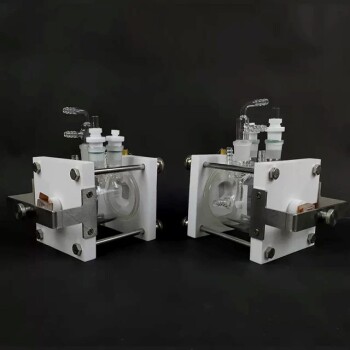
Flat Corrosion Electrolytic Electrochemical Cell
Discover our flat corrosion electrolytic cell for electrochemical experiments. With exceptional corrosion resistance and complete specifications, our cell guarantees optimal performance. Our high-quality materials and good sealing ensure a safe and durable product, and customization options are available.
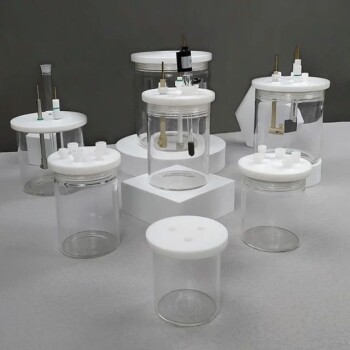
Electrolytic Electrochemical Cell with Five-Port
Streamline your laboratory consumables with Kintek's Electrolytic Cell with five-port design. Choose from sealed and non-sealed options with customizable electrodes. Order now.
Related Articles

Applications of H-Type Electrolytic Cell in Metal Extraction
H-type electrolytic cells uses an electrolyte solution to dissolve the metal ions and an electric current to separate the metal ions from the solution.

Understanding Quartz Electrolytic Cells: Applications, Mechanisms, and Advantages
Explore the detailed workings, applications, and benefits of quartz electrolytic cells in various industries. Learn how these cells facilitate precise chemical reactions and their role in high-purity metal production.

Understanding Electrolytic Cells and Their Role in Copper Purification and Electroplating
Electrolytic cells play a crucial role in various industrial processes, including copper purification and electroplating. These cells utilize an external power source to drive chemical reactions, resulting in the decomposition of substances. Through the process of electrolysis, an electric current is passed through a liquid or solution containing ions, causing them to break down.

The Architecture of Precision: Why Your Electrolytic Cell Specs Matter More Than You Think
Discover the critical logic behind electrolytic cell specifications. From aperture geometry to volume trade-offs, learn how the right vessel defines experimental success.

The Glass Heart of the Experiment: Mastering the Electrolytic Cell
Master the art of handling electrolytic cells. Learn the critical balance between physical fragility, chemical safety, and operational precision.

The Silent Dialogue: Mastering Control in Electrolytic Cells
Electrolysis is a non-spontaneous act requiring precise control. Learn to interpret the interplay of voltage, current, and physical phenomena for safer lab results.

Overcoming Challenges with H-Type Electrolytic Cell Operation
Understanding the components and operation of the H-type electrolytic cell is crucial in producing high-quality chemicals and overcoming the challenges that come with its operation.

Understanding Electrodes and Electrochemical Cells
An electrode is a point where current enters and leaves the electrolyte. It is a conductor used to make a junction with a nonmetallic part of a circuit. Electrodes can be made of materials such as gold, platinum, carbon, graphite, or metal. They serve as the surface for oxidation-reduction reactions in electrochemical cells. There are different types of electrodes, including anode and cathode.

The Art of Resistance: Why Your Electrolytic Cell Needs Breathing Room
Short circuits in electrolytic cells aren't just accidents; they are geometry failures. Learn how to control the electrical path and protect your lab equipment.

The Unseen Variable: Mastering the Electrolytic Cell Inspection
Precision in electrochemistry begins before the current flows. Discover the critical pre-use checks for electrolytic cells that ensure safety and data integrity.

Applications of Electrolytic Cells in Purification and Electroplating
Electrolytic cells are chemical cells that use electricity to generate a non-spontaneous redox reaction. These cells are used in various electrochemical processes such as electrolysis and electroplating.

Electrochemistry The Science Behind Electrochemical Cells
Electrochemistry is important because it helps us understand the behavior of materials and substances in different environments.